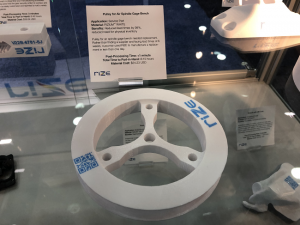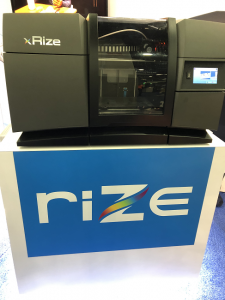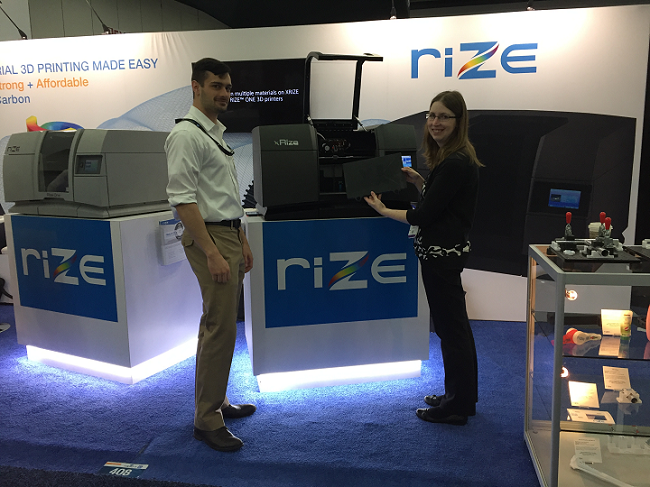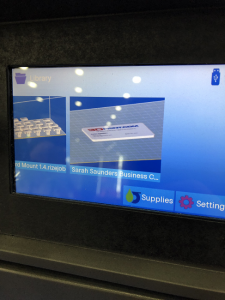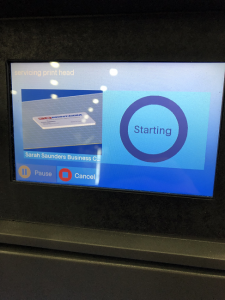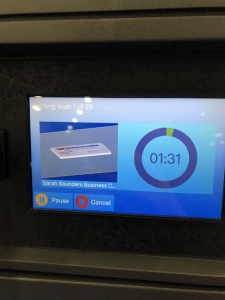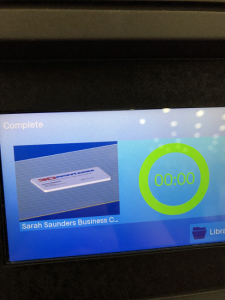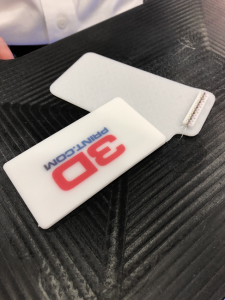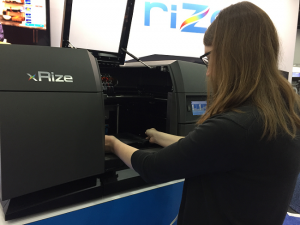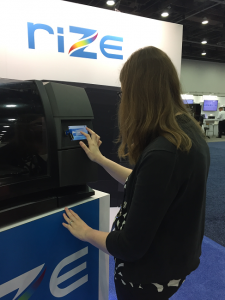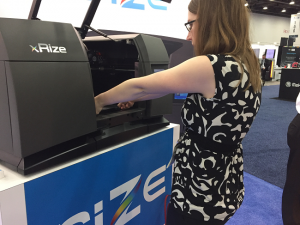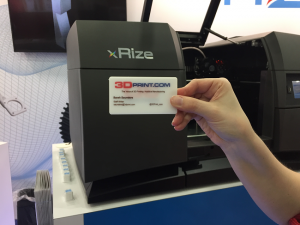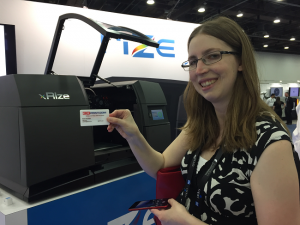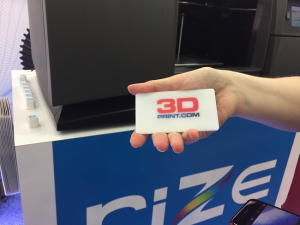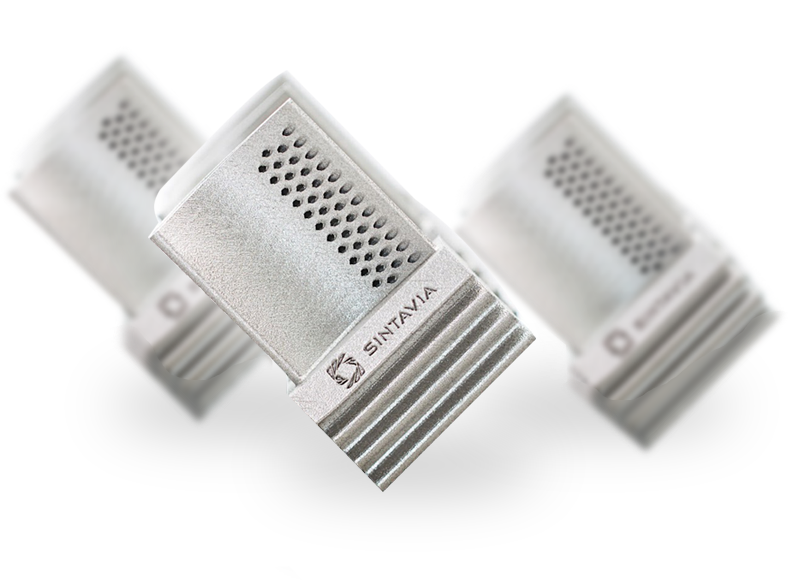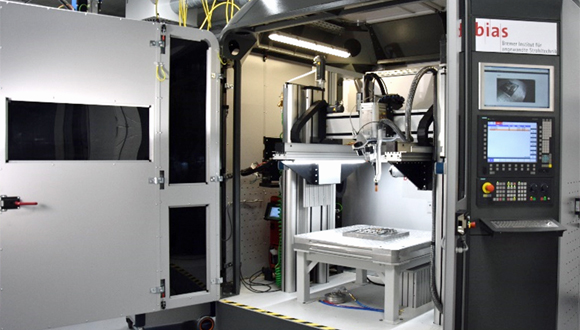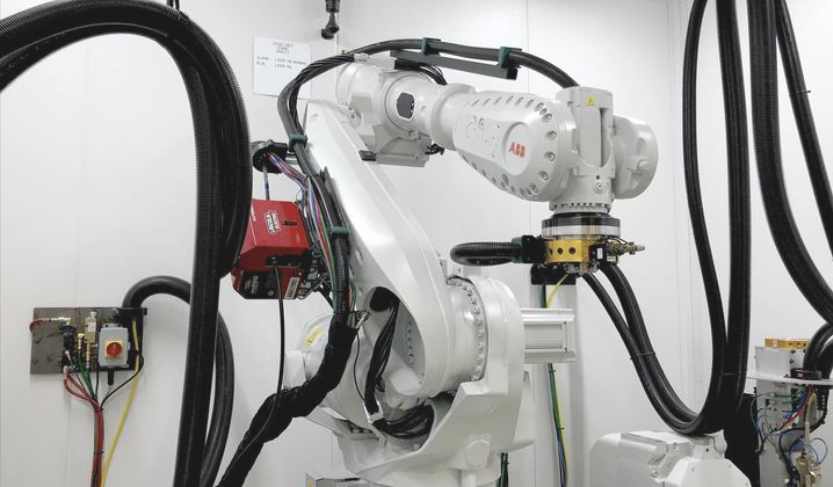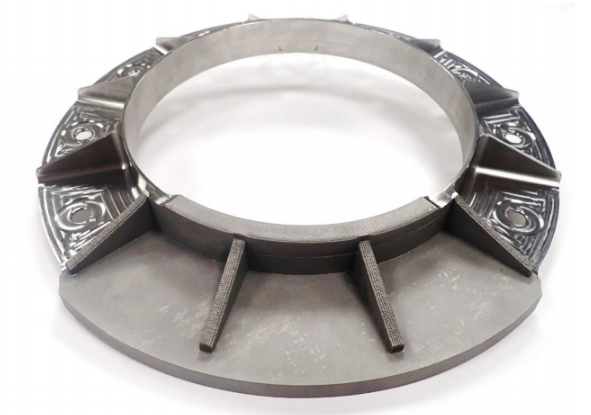Wichita State University & Army 3D Print Parts for Aging Black Hawk Helicopters
A recent collaboration between U.S. Army Aviation and Missile Command and Wichita State University will enhance the helicopter fleet for this division of the military. Researchers from the National Institute for Aviation Research are currently working with both organizations to dismantle a UH-60L Black Hawk for the purposes of making a digital replica.
NIAR researchers will begin by 3D scanning parts and, while this is an undertaking in itself, they must first take apart components like the airframes from a helicopter that is operational. For this project, a separate fuselage is also being delivered to the University from Corpus Christi Army Depot. The focus is the Lima helicopter model, which has actually been out of production for the past 15 years, although some parts are as old as 40 years.
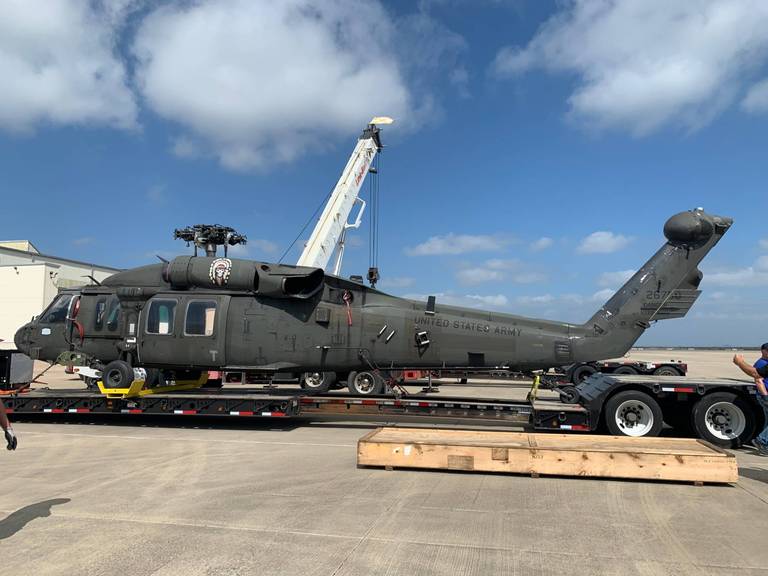
Wichita State University researchers will disassemble a UH-60L Black Hawk helicopter to capture a 3D scan of each structural part. (Image: Wichita State University)
“Digital-twin technology provides a virtual environment that facilitates the crawl, walk, run training philosophy that enables Soldiers to develop confidence in a simulated environment before performing the task on an actual aircraft,” said AMCOM Command Sgt. Maj. Mike Dove. “Virtual environments enable a task to be taught through distance learning with the subject matter expert thousands of miles away.”
While knowledge of 3D printing may still be relatively new to the general public, it is hardly a novelty to the military or other organizations, like NASA, who have been making use of additive manufacturing processes for decades whether for rapid prototyping or functional—and critical—parts.
The benefits of such technology are evidenced in full force for this recent project, offering huge savings on the bottom line in terms of maintenance for the U.S. Army Aviation and Missile Command, but also fast production, the potential for creating parts that are lighter and offer better performance, as well as the opportunity for making items that may not have even been previously possible with traditional methods.
As obsolescence becomes a problem for other divisions of the military, too, trying to keep up with equipment maintenance and repairs, some parts may be difficult to find, taking months to track down, or they may not even be available at all anymore. 3D printing offers much more than a quick fix. By 3D scanning parts of older machines, industrial users are able to replicate items that may have become outdated—offering indefinite longevity to aging fleets.
Modifications can easily be made, and quickly so. This is true also for automotive applications, train manufacturers, and other divisions of the military as they work to keep equipment like Navy ships properly maintained.
“The intent is to enable readiness across the Army and the UH-60 fleets in the joint service and the applicable foreign military sales environment,” AMCOM Commander Maj. Gen. Todd Royar said in a statement. “At the same time, we generate new opportunities to provide parts that are obsolete, low-volume or small quantity. The result is reduced operation and sustainment costs.”
“It takes this team of teams’ approach that will benefit not just the military but also academia and industry.”
Officials stated in a recent press release that the purpose of re-creating helicopter parts with 3D scanning and 3D printing for better maintenance will ‘resolve challenges and boost efficiencies’ for aircraft like the Black Hawk, and the Lima model.
“Our goal is to develop a prototype capability which will transition into not just existing platforms within the Department of Defense but identify the digital engineering requirements for future platform development,” said Maj. Sam Gray, Program Manager for the Strategic Capabilities Office. “It will be of great benefit to the Army if we can reduce sustainment costs and increase readiness for the UH-60L. This is a unique opportunity to bring a game-changing technology to the sustainment and logistics fields.”

Sen. Jerry Moran, R-Kansas, said that Secretary of State Mike Pompeo would be a “solid candidate” for the Senate seat of retiring Republican Pat Roberts. Moran was at a Wichita event with Acting Secretary of the Army Ryan McCarthy. (Sept. 5, 2019). Image: Wichita Eagle.
What do you think of this news? Let us know your thoughts; join the discussion of this and other 3D printing topics at 3DPrintBoard.com.
[Source / Images: Wichita State University; Wichita Eagle]
The post Wichita State University & Army 3D Print Parts for Aging Black Hawk Helicopters appeared first on 3DPrint.com | The Voice of 3D Printing / Additive Manufacturing.
U.S. Army and WSU to 3D print Black Hawk helicopter components
America Makes to launch third Satellite Center focused on 3D printing in aerospace
Interview with RIZE: Trying Out the XRIZE 3D Printer at RAPID 2019
[Image: Julie Reece, RIZE]
Typically, when I attend trade shows and events like RAPID + TCT and SOLIDWORKS World, I attend some presentations, maybe sit in on a panel discussion or two, and walk the show floor, conducting interviews and seeing what there is to see. I take closer looks at the systems we write about every day, get the chance to handle a part or two, and sometimes even try on 3D printed helmets. But I don’t normally have the opportunity to actually operate the hardware…until the recent RAPID 2019, when I met with Boston-based additive manufacturing company RIZE.
Let me back up – I was there for an interview with RIZE President and CEO Andy Kalambi to discuss the company’s patented Augmented Polymer Deposition (APD) technology, which allows for the easy snap-off release of supports. At formnext in November, the company introduced its industrial desktop XRIZE 3D printer, and I wanted to get a good look at the system that promises to print parts twice as fast as other leading AM technologies.
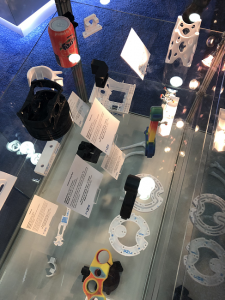 First, Kalambi told me that the company had just announced a partnership with Wichita State University’s National Institute of Aerospace Research (NIAR) at RAPID that’s focused on bringing 3D printing to end users.
First, Kalambi told me that the company had just announced a partnership with Wichita State University’s National Institute of Aerospace Research (NIAR) at RAPID that’s focused on bringing 3D printing to end users.
“We launched this whole concept called ‘smart spaces,’” Kalambi explained. “Makerspaces need to come to engineers, engineers don’t need to go to makerspaces.”
He told me that RIZE and its 3D printers are “purpose built” for safety, which is an area the company will not compromise on – this year, RIZE actually won the New Equipment Digest Innovation Award (the only 3D printing company to do so), and the Frost & Sullivan award for Best Practices in Technology Innovation, for its safe, zero-emission polymer 3D printing technology. In fact, Kalambi shared that a customer had told them at the AMUG conference that he uses their printers because he knows in 30 years he won’t get cancer – quite the endorsement.
“So we said, let’s purpose build our machine and our system for safety. Then we start extending that, and from safety we extend that to security – how do we ensure that a print is secure? That’s where the marking came in. And then we said, let’s start looking at applications and start solving those application problems. So that’s how we introduced carbon composite – this is another original material that has good strength.”
Engineering-grade RIZIUM CARBON is the company’s newest material, and features a higher modulus and excellent visual finish, making it perfect for functional prototyping.
Going back to the safe spaces concept, RIZE wanted to see what else they could add – more materials for more applications, and color as well.
“The 3D printing industry has condemned users to a monochrome world. So let’s bring color – every part can be in different colors, and not color for the sake of color, but color for the sake of communication, color for the sake of reducing errors, color for the sake of being more lifelike,” Kalambi said. “This is consumer validation…when you’re waiting at a traffic light and you see red, that’s communication.
“I don’t think this industry has bothered about color.”
 I mentioned there were only a few companies I could think of off the top of my head that were really doing color well, and he agreed, but stated that they were all really costly machines. Kalambi hopes that the next time we see RIZE machines displayed at a conference, all of the sample parts will be in color, and not just a few.
I mentioned there were only a few companies I could think of off the top of my head that were really doing color well, and he agreed, but stated that they were all really costly machines. Kalambi hopes that the next time we see RIZE machines displayed at a conference, all of the sample parts will be in color, and not just a few.
“There are many difference aspects to color, and that’s really exploded our use case scenarios.”
The company’s new color 3D printer will be heading to the market soon, shipping to early customers this month and generally available for purchase in August.
After mentioning that RIZE’s recent strategic partnership with Dassault Systèmes has brought the company a lot of continuity, we moved on to generative design and the company’s unique digitally augmented parts. He showed me how easy it was to add the company’s logo to the design file, as well as the bar code.
“Our uniqueness is our ability to mark,” Kalambi told me. “We’re the only ones doing it.”
Kalambi explained that RIZE covers the entire stream, all the way from digital marketing and quoting to manufacturing and delivery.
“You’re investing in the platform, not just the 3D printer,” he said. “We are focused on the user, not just the product.”
He said that RIZE wants users to feel comfortable using its machines and software, and that the company can train customers on its 3D printers in just 15 minutes. That’s when he got an idea – let me print something on the XRIZE at RAPID. Kalambi called over Vice President of Marketing Julie Reece to see if we’d have time to make it happen the next day, and once we figured out timing, he asked for my business card so it could be turned into a 3D model. Feeling pretty excited over what was to come, I left to conduct my next interview, with RIZE newly on my schedule for the next morning.
[Image: Julie Reece, RIZE]
When I arrived the next morning, Reece introduced me to RIZE Applications Engineer Neil Foley, who gave me a quick rundown on how the XRIZE 3D printer works. He opened the side panel so I could see the colored inks inside, and explained that the print of my business card would have a total of 29 layers; the first five layers would be a raft. The white filament is a little translucent so that the colors really shine through.
With just a few simple instructions from Foley, I was able to put in the magnetized build plate, close the door, and easily navigate the 3D printer’s touchscreen to select, and start, the print. The touchscreen not only tells you how long the print will take, but what layer it’s currently printing, with options to pause or cancel if necessary.
 I stayed at the booth to watch the five layers of the raft, and the first layer of the print itself, but then had to leave to take care of a few things before driving home from the show later that day. During the time I was gone, Reece contacted me to let me know that the print was complete, and that I could come back to the booth anytime to remove it from the plate.
I stayed at the booth to watch the five layers of the raft, and the first layer of the print itself, but then had to leave to take care of a few things before driving home from the show later that day. During the time I was gone, Reece contacted me to let me know that the print was complete, and that I could come back to the booth anytime to remove it from the plate.
Once I arrived, I took a few pictures of my completed print, then opened the door and pulled out the build plate, This was a little tougher than I imagined, possibly due to the magnets, but more likely because I tend to be nervous when handling expensive machinery and was afraid to pull too hard.
I was supposed to remove the supports myself, which I was really excited about, but because the print was pretty thin, they came off almost immediately when Foley removed the raft. But, Reece brought me over a small part that had just come off the Rize One so I could remove those supports, and it truly is as easy as it looks – hardly any pressure is required to snap them off. As for the XRIZE itself, it is definitely a user-friendly system, and for an industrial machine, that’s pretty great news.
All in all, I had a good talk with Kalambi at RAPID, and was thrilled to be given the chance to operate the XRIZE 3D printer and make a 3D printed version of my business card, which now sits on my desk at home. Take a look below to see more pictures that RIZE’s Julie Reece took of me operating the printer at RAPID:
Discuss this story and other 3D printing topics at 3DPrintBoard.com or share your thoughts in the Facebook comments below.
[Images: Sarah Saunders unless otherwise noted]
Top 10 3D Printing Aerospace Stories from 2018
3D printing has played an important role in many industries over the past year, such as medical, education, and aerospace. It would take a very long time to list all of the amazing news in aerospace 3D printing in 2018, which is why we’ve chosen our top 10 stories for you about 3D printing in the aerospace industry and put them all in a single article.
Sintavia Received Approval to 3D Print Production Parts for Honeywell Aerospace
Tier One metal 3D printer manufacturer Sintavia LLC, headquartered in Florida, announced in January that it is the first company to receive internal approval to 3D print flightworthy production parts, using a powder bed fusion process, for OEM Honeywell Aerospace. Sintavia’s exciting approval covers all of Honeywell’s programs.
Boeing and Oerlikon Developing Standard Processes
Boeing, the world’s largest aerospace company, signed a five-year collaboration agreement with Swiss technology and engineering group Oerlikon to develop standard processes and materials for metal 3D printing. Together, the two companies will use the data resulting from their agreement to support the creation of standard titanium 3D printing processes, in addition to the qualification of AM suppliers that will produce metallic components through a variety of different materials and machines. Their research will focus first on industrializing titanium powder bed fusion, as well as making sure that any parts made with the process will meet the necessary flight requirements of both the FAA and the Department of Defense.
FITNIK Launched Operations in Russia
In 2017, FIT AG, a German provider of rapid prototyping and additive design and manufacturing (ADM) services, began working with Russian research and engineering company NIK Ltd. to open up the country’s market for aerospace additive manufacturing. FIT and NIK started a new joint venture company, dubbed FITNIK, which combines the best of what both companies offer. In the winter of 2018, FITNIK finally launched its operations in the strategic location of Zhukovsky, which is an important aircraft R&D center.
New Polymer 3D Printing Standards for Aerospace Industry
The National Institute for Aviation Research (NIAR) at Wichita State University (WSU), which is the country’s largest university aviation R&D institution, announced that it would be helping to create new technical standard documents for polymer 3D printing in the aerospace industry, together with the Polymer Additive Manufacturing (AMS AM-P) Subcommittee of global engineering organization SAE International. These new technical standard documents are supporting the industry’s interest in qualifying 3D printed polymer parts, as well as providing quality assurance provisions and technical requirements for the material feedstock characterization and FDM process that will be used to 3D print high-quality aerospace parts with Stratasys ULTEM 9085 and ULTEM 1010.
Premium AEROTEC Acquired APWORKS
Metal 3D printing expert and Airbus subsidiary APWORKS announced in April that it had been acquired as a subsidiary by aerostructures supplier Premium AEROTEC. Premium AEROTEC will be the sole shareholder, with APWORKS maintaining its own market presence as an independent company. Combining the two companies gave clients access to 11 production units and a wide variety of materials.
Gefertec’s Wire-Feed 3D Printing Developed for Aerospace
Gefertec, which uses wire as the feedstock for its patented 3DMP technology, worked with the Bremer Institut für Angewandte Strahltechnik GmbH (BIAS) to qualify its wire-feed 3D printing method to produce large structural aerospace components. The research took place as part of collaborative project REGIS, which includes several different partners from the aerospace industry, other research institutions, and machine manufacturers. Germany’s Federal Ministry for Economic Affairs and Energy funded the project, which investigated the influence of shielding gas content and heat input on the mechanical properties of titanium and aluminium components.
Research Into Embedded QR Codes for Aerospace 3D Printing
It’s been predicted that by 2021, 75% of new commercial and military aircraft will contain 3D printed parts, so it’s vitally important to find a way to ensure that 3D printed components are genuine, and not counterfeit. A group of researchers from the NYU Tandon School of Engineering came up with a way to protect part integrity by converting QR codes, bar codes, and other passive tags into 3D features that are hidden inside 3D printed objects. The researchers explained in a paper how they were able to embed the codes in a way that they would neither compromise the integrity of the 3D printed object or be obvious to any counterfeiters attempting to reverse engineer the part.
Lockheed Martin Received Contract for Developing Aerospace 3D Printing
Aerospace company Lockheed Martin, the world’s largest defense contractor, was granted a $5.8 million contract with the Office of Naval Research to help further develop 3D printing for the aerospace industry. Together, the two will investigate the use of artificial intelligence in training robots to independently oversee the 3D printing of complex aerospace components.
BeAM And PFW Aerospace Qualified 3D Printed Aerospace Component
BeAM, well-known for its Directed Energy Deposition (DED) technology, announced a new partnership with German company PFW Aerospace, which supplies systems and components for all civilian Airbus models and the Boeing 737 Dreamliner. Together, the two worked to qualify a 3D printed aerospace component, made out of the Ti6Al4V alloy, for a large civil passenger aircraft, in addition to industrializing BeAM’s DED process to manufacture series components and testing the applicability of the method to machined titanium components and complex welding designs.
Researchers Qualified 3D Printed Aerospace Brackets
Speaking of parts qualification, a team of researchers completed a feasibility study of the Thermoelastic Stress Analysis (TSA) on a titanium alloy space bracket made with Electron Beam Melting (EBM) 3D printing, in order to ensure that its mechanical behavior and other qualities were acceptable. The researchers developed a methodology, which was implemented on a titanium based-alloy satellite bracket.
Discuss these stories and other 3D printing topics at 3DPrintBoard.com or share your thoughts below.




